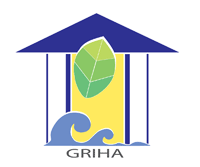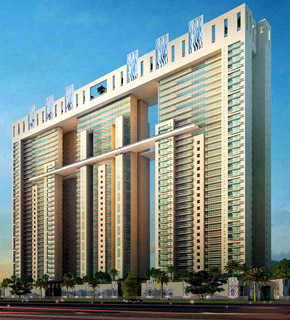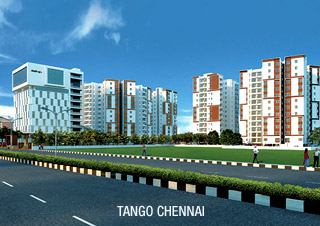Towards Building a Sustainable Future
- 23rd Mar 2015
- 3221
- 0

Green buildings that signify development in sync with the utmost care for the environment are today more the norm than the exception with an increasing number of buyers and developers opting for certified Green projects that feature several eco-friendly initiatives promoting the concept of sustainable development, writes RAJESH KULKARNI.
It’s a known fact that the real estate sector is one of the leading contributors to the growing threat of global warming. High levels of pollution during the construction phase of an ongoing project and the emission of dangerous greenhouse gases post construction are the two primary reasons. According to some estimates, buildings typically consume approx 20 percent of the total energy produced by a country, a dangerous trend that is only growing in tandem with the need to build more homes. On the flip side however, a growing awareness among both home buyers and developers to build sustainable homes that are in sync with the environment, has triggered a huge growth in the number of certified –Green Building projects across the country today. As per recent estimates, with a Green footprint of approx 2bn sqft, India today ranks among the top nations with the highest number of IGBC-registered Green buildings.
On the flip side however, a growing awareness among both home buyers and developers to build sustainable homes that are in sync with the environment, has triggered a huge growth in the number of certified –Green Building projects across the country today. As per recent estimates, with a Green footprint of approx 2bn sqft, India today ranks among the top nations with the highest number of IGBC-registered Green buildings.
In a nutshell, Green Buildings can be defined as projects that reduce or eliminate the harmful negative impacts of development on the environment, conserve precious resources like energy and water, reduce dependence on construction materials in favour of natural resources and focus on improving the overall environmental quality at the site.
India currently has two major rating systems: LEED India, run by the Indian Green Building Council and Green Rating for Integrated Habitat Assessment (GRIHA), a system developed by The Energy and Research Institute (TERI) and the Ministry of New and Renewable Energy. The GRIHA rating system is slowly strengthening its presence alongside the more popular LEED India.
Indian Green Building Council (IGBC): Formed in the year 2001, the Indian Green Building Council (IGBC), an integral arm of the Confederation of Indian Industry (CII), is the primary ratings and certification body for green projects and buildings in the country, offering the globally-recognised Leadership in Energy and Environmental Design (LEED) ratings.
Formed in the year 2001, the Indian Green Building Council (IGBC), an integral arm of the Confederation of Indian Industry (CII), is the primary ratings and certification body for green projects and buildings in the country, offering the globally-recognised Leadership in Energy and Environmental Design (LEED) ratings.
Constituted with a vision to, ‘To enable a sustainable built environment for all and facilitate India to be one of global leaders in the sustainable built environment by 2025’, the IGBC is driven by all the major stakeholders of the realty and construction industry including developers, architects, nodal agencies, material manufacturers, government agencies and corporates.
Known for its flagship event the Green Building Congress, the IGBC also offers a slew of important services including: the development of new green building rating programmes, certification services and sustainable training initiatives designed to promote green building concepts in the country.
Green Ratings for New Buildings: As part of its initiative for certifying Green buildings in the new buildings/projects category the IGBC addresses multiple green aspects of every project under key categories that include: Sustainable architecture & design, water conservation, building materials and resources, site selection & planning, indoor environmental quality and innovation & development.
As part of its initiative for certifying Green buildings in the new buildings/projects category the IGBC addresses multiple green aspects of every project under key categories that include: Sustainable architecture & design, water conservation, building materials and resources, site selection & planning, indoor environmental quality and innovation & development.
The ratings designed for new buildings cover corporate offices, banks, IT parks, banks, retail malls, hotels, airports, convention centers, airports and libraries among others. Importantly building types such as residential projects, schools and factory buildings are covered under different IGBC ratings programmes.
The council has specific guidelines under each category encompassing the design and construction aspects of all new buildings as defined by their size and type. It further awards different levels of green building certification as per the total credits earned by the said project that include a few mandatory criteria which are compulsory.
Broadly classified into two primary categories, the green ratings systems for new buildings covers owner-occupied buildings (wherein a minimum 51 percent of the built-up area is occupied by the owner) and tenant-occupied buildings (wherein a minimum 51 percent of the built-up area is occupied by the tenants).
On the basis of this, project leads can identify all the potential points to apply under the requisite rating system before going ahead with the application for the Green certification, after meeting all the stated mandatory requirements and garnering the minimum points needed to qualify. Projects that qualify are then awarded a formal letter of certification and a plaque by the IGBC.
Advantages of Green Buildings: At the onset genuine Green buildings offer a host of tangible and intangible benefits to both the developer and building residents. According to experts, the energy savings alone in a green building could range from anywhere between 20-30percent, while a reduction in water bills usually amounts to between 30-50 percent. For example, a good design that emphasizes on a natural cooling system can reduce the air-conditioning bill by as much as 20-30 percent.
At the onset genuine Green buildings offer a host of tangible and intangible benefits to both the developer and building residents. According to experts, the energy savings alone in a green building could range from anywhere between 20-30percent, while a reduction in water bills usually amounts to between 30-50 percent. For example, a good design that emphasizes on a natural cooling system can reduce the air-conditioning bill by as much as 20-30 percent.
Green buildings also offer their residents the chance to live/work in an environment that feature a significantly enhanced air quality, excellent natural lighting, cleaner & healthier environment and use eco-friendly facilities like rain-water harvesting and sewage recycling plants.
Contrary to popular belief, the cost of developing a green building which used to be significantly higher than a regular project now costs approx 8-10 percent more than a non-green project. For example, the incremental costs of eco-friendly technologies like hypo-thermal glass for the building façade and insulation for the interiors is approx 5-8 percent maximum. Since the saving potential is also high, this additional cost can easily be recovered in about 3-5 years.
What to Look For In a Green Home:
With more and more buyers insisting on eco-friendly, certified projects some developers have resorted to unfair means to promote their projects under this category. Others have resorted to branding their projects green, harping on the presence of ‘landscaped gardens and parks’, which is in complete contravention of green building norms.
While the one irrefutable proof of a green project is the relevant project certification by authorised agencies like GRIHA and IGBC, buyers can look for several others pointers that can help identify the genuine from the wannabes.
For example:
Does the project offer easy access to public transportation facilities, thereby reducing the need for private transport?
Does it feature facilities that consume less water- energy efficient lighting systems?
Does the project have eco-friendly measures like solar water heaters, sewage treatment plants, rain water harvesting, sustainable waste disposal features and water recycling/reuse facilities installed?
Does it enable ample natural lighting & ventilation with adequate open spaces & green zones?
Does it include covered car parking for residents?
Ongoing Green Projects:
With the emphasis on going green gaining momentum in the last few years, there has been a proliferation of projects by leading developers’ pan-India that have achieved LEED certification or have applied for one under different categories. These include projects like Lodha’s upcoming 4,000-acre Palava City on the outskirts of Mumbai.
Slated to become the largest ever private, completely planned development in urban India and Maharashtra’s first-ever mega city, Palava includes a slew of eco-friendly facilities onsite. These include: sky gardens (to cool buildings naturally), rainwater harvesting systems, 100-percent sewage recycling plants, water-cooled air-conditioning for all office buildings (using only recycled water), vermin-composting facility, harnessing solar power for street lighting and LEED-certified commercial buildings among others. Located within the lush green campus of Godrej Business District @Vikhroli, Mumbai, the Godrej IT Park is an apt example of a large commercial project built with the utmost care for preserving the environment. With a constructed space in excess of 1.4mn sqft and a leasable area of approx 1mn sqft, this IT Park is a LEED-certified commercial Green Building project offering 2 stilt levels & 2podium levels for car parking, building services and utilities and 6 levels of office space.
Located within the lush green campus of Godrej Business District @Vikhroli, Mumbai, the Godrej IT Park is an apt example of a large commercial project built with the utmost care for preserving the environment. With a constructed space in excess of 1.4mn sqft and a leasable area of approx 1mn sqft, this IT Park is a LEED-certified commercial Green Building project offering 2 stilt levels & 2podium levels for car parking, building services and utilities and 6 levels of office space.
The building come fully loaded with a range of modern facilities and eco-friendly amenities that include a modern electrical systems, HVAC, plumbing and fire fighting, a state-of-the-art building management system, sewage treatment plants and a DG back-up. Up north, Saha Groupe has achieved a LEED Platinum pre-certification for its prestigious Amadeus, 3 & 4BHK luxury residential apartment project at Noida. The project includes several eco-friendly initiatives like: rain-water harvesting (on both roof and non-roof areas), automatic smart irrigation systems, waste-water treatment plants, tobacco smoke control, 91.62 percent cumulative green coverage on rooftop garden, private sky/terrace gardens, podium gardens & ground floor gardens, energy metering for tenants and CFC- free equipment- VRV air-conditioning among other modern amenities.
Up north, Saha Groupe has achieved a LEED Platinum pre-certification for its prestigious Amadeus, 3 & 4BHK luxury residential apartment project at Noida. The project includes several eco-friendly initiatives like: rain-water harvesting (on both roof and non-roof areas), automatic smart irrigation systems, waste-water treatment plants, tobacco smoke control, 91.62 percent cumulative green coverage on rooftop garden, private sky/terrace gardens, podium gardens & ground floor gardens, energy metering for tenants and CFC- free equipment- VRV air-conditioning among other modern amenities. Mahindra Lifespaces premium ongoing residential high-rise project - Ashvita at Kukatpally (Hi-Tech City), Hyderabad has also bagged an IGBC pre-certified Green Gold certification. Spread across 9 acres with 5 towers hosting a total of 664, 2, 3 & 4BHK units priced from INR53 lakhs onwards, this Mahindra Lifespaces project has earned its green credits on the basis of its several green features. These include: an organic waste converter, special parking slots for the disabled, electric car charging facility, car wash area, water treatment plant and an array of solar lighting fixtures in common areas.
Mahindra Lifespaces premium ongoing residential high-rise project - Ashvita at Kukatpally (Hi-Tech City), Hyderabad has also bagged an IGBC pre-certified Green Gold certification. Spread across 9 acres with 5 towers hosting a total of 664, 2, 3 & 4BHK units priced from INR53 lakhs onwards, this Mahindra Lifespaces project has earned its green credits on the basis of its several green features. These include: an organic waste converter, special parking slots for the disabled, electric car charging facility, car wash area, water treatment plant and an array of solar lighting fixtures in common areas. The Akshaya Group, which has over 150 completed real estate projects in South India to its credit, has gone a step further, and joined hands with the IGBC as one of its founding members. In keeping with its endeavour to reduce the carbon footprint and optimize the use of natural resources, the company has resolved to build only ‘Green’ projects. As a result all its projects have been developed in keeping with IGBC regulations for Green buildings and have been LEED-certified by the council with the Platinum, Gold and Silver certifications.
The Akshaya Group, which has over 150 completed real estate projects in South India to its credit, has gone a step further, and joined hands with the IGBC as one of its founding members. In keeping with its endeavour to reduce the carbon footprint and optimize the use of natural resources, the company has resolved to build only ‘Green’ projects. As a result all its projects have been developed in keeping with IGBC regulations for Green buildings and have been LEED-certified by the council with the Platinum, Gold and Silver certifications.
In Conclusion:
At a time when the world is increasingly witnessing the adverse effects of global warming, there is clearly a need for a renewed thrust to promote sustainable urban development and responsible use of natural resources. The increasing concern for the environment has triggered the need to promote sustainable solutions for our housing and infrastructure needs.
There is already ample proof that suggests living in conventional brick-and-mortar buildings comes at a heavy price for its residents both in terms of their living standards and the excessive consumption of precious resources like water and energy.
Green buildings and eco-friendly habitats offer an integrated approach to sustainable urban development and promote the concept of healthier living among people while ensuring a minimal impact on the environment and scarce natural resources. It’s only in our collective best interests that we take this concept forward for the sake of our survival and that of our future generations.
(all prices mentioned herein are purely indiciative.)



Comments
Add Your Comment
Thank you, for commenting !!
Your comment is under moderation...
Keep reading other articles